I devoted my most recent newsletter to reviewing Joshua McFadden’s Six Seasons: A New Way with Vegetables; so it only made sense that I inevitably wound up at the Hollywood Farmer’s market several days later, filling my tote bag with a wide variety of veggies (and a few fleeting fruits). The goal was to make good on my plan to eat lots of veggies in the new year, especially if it meant exploring more of Six Seasons. But foolishly, I didn’t actually come up with a game plan before heading to the market, which meant I was instantly lost at sea. I’m a recipe guy: I like to settle on a dish first, create a shopping list, and then execute. Starting with ingredients first — as seems to be the philosophy of Six Seasons, let alone most chefs — is not my comfort zone. Could I actually do it?
Admittedly, I’d been down this path before – wafting around a farmers’ market like I was in a Nancy Meyers movie, purchasing pretty veggies because they made me feel sophisticated. Maybe I’d use some of my bounty in a soup or a pasta. Or maybe I’d conjure up a giant salad. More often than not though, my glorious veggies would wind up dying sadly in the back of the crisper – victims of good intentions and neglect.
I’m not proud of vegetable murder. I didn’t want to even admit that it’s something I engage in, but I refuse to approach this column with anything other than brutal honesty. It’s terrible and wasteful to watch things go bad in the fridge, and that’s why I’ve more or less stopped attempting to be that person who shops first and then figures out a plan later.
But this past weekend, as I strolled amongst the masses with their deeply awful and cheffy grocery wagons(seriously, everyone thinks they’re starring in The Bear now), I really had no idea what vegetables I wanted or what to do with them. I didn’t even have a recipe from Six Seasons queued up to guide me. All I had was a mental mission statement: must eat more vegetables. I decided to follow McFadden’s common-sense approach for once: go for what looks to be in season and what might play well together1.
First I saw some cauliflower. Then a cabbage that resembled a discarded prop from Little Shop of Horrors. Visions of roasted vegetables topped with some sort of zingy sauce came into my head. Fennel! No, a giant fennel! That would work. Carrots? Maybe. Broccolini? Definitely.
I was in the zone. I was thinking in terms of flavors and textures, not in terms of shopping lists and recipes. Was this growth? Or pretension? Could have been both. Soon the wheels started to come off the bus. I grabbed three persimmons. Why? I don’t know. But I sensed I could throw them into a salad. Can’t make a salad without lettuce. Or dill. Add them to the bag! Leeks – because what if I wanted to make that leek and egg and anchovy thing from Six Seasons again? And hey, look at that Treviso radicchio! It’s such a beautiful purple!
I’d fallen into the trap again. Despite my best efforts, I was plucking pretty things with no idea how they would all work together. I could already sense this becoming a very wasteful exercise. But there was one item that was so big and beautiful that I refused to let it be forgotten in the fridge: a luminous bunch of swiss chard.
With shiny leaves and stems as wide as a didgeridoo, the chard I found was an eye catcher — so much so that as I walked through the market, a woman complimented me on my bundle. I knew I had to do right by this chard, if only for the lady-stranger’s sake.
I arrived home and immediately whipped up a devastatingly glorious meal with my beautiful chard. At least, that’s what I told myself I would do. Instead, I put the vegetables in the fridge and played board games with friends for several hours. Too many hours. Then I had to work. And then suddenly, 36 hours later had passed. One full night later, my chard was still languishing in my crisper. “Cool chard,” said the farmers’ market lady in my head. “Too bad you’re wasting it.” Gah! She was brain guilting me! I had to use the tell-tale chard before it drove me to total madness.
Unfortunately, aside from my farmers’ market haul, my fridge was pretty desolate. I hadn’t gone to the supermarket due to a massive rainstorm that had created debilitating levels of stay-at-home coziness. I would have to create something from pantry items. My poor chard deserved a well-curated recipe, not some cobbling together of dusty ingredients. This would either turn out great or be a total travesty.
“I have a Substack,” I told myself, “I CAN DO THIS.” My mind immediately went to the can of garbanzo beans sitting patiently in my cupboard. I was reminded of an old Mark Bittman recipe that paired spinach and chickpeas. I was also reminded of the time I tried to cook said recipe for a date and accidentally lit the beans on fire in my broiler. The classic combo of wilted greens and garbanzos was worth revisiting, even if the smoke and flames weren’t.
I remembered that Bittman’s recipe called for Spanish chorizo, which I didn’t have, but luckily, there was a random beef salami in my fridge, courtesy of my parents who’d recently sent me a Zabar’s care package, natch. I felt confident I had the ingredients I needed to turn my chard into a suitable rainy night meal.
I kicked things off by sautéing some onions in my Dutch oven, eventually adding minced garlic late in the process to avoid burning. Next, I cubed about half of the salami and dropped it into the aromatics, hoping the heat would extract some of the fat and flavor into the olive oil. Of course, almost anytime I cook with sausage, I always add a few healthy shakes of fennel seed. Just like how Ina Garten states that coffee makes chocolate taste more like chocolate, the same goes for fennel and sausage in my humble opinion.
Once the salami showed browning, I added the chickpeas. My thinking was that they would crisp up a bit in the olive / salami oil. That didn’t really happen, which was fine. There probably wasn’t enough oil in the Dutch oven to make that crispy dream come true. Still, I cooked the garbanzos until they darkened, and along the way, the bottom of the pot became quite brown with what I assumed were decimated chickpea skins (or some sort of starch). This was the perfect excuse to add a glug of white wine to the mix — just for a casual deglaze.
Eventually, as the chickpeas took on color, I added the chard stems, which I had removed from the leaves and diced. They would need a head start; so I let them sauté in the salami mixture for several minutes. This led to bored doting: a sprinkling of red pepper flakes here, more fennel there. I didn’t go too nuts with the salt since the salami was already pretty salty, but I definitely added one or two pinches.
Finally, it was time for the main event: the wilting of the chard greens. I threw them in the pot as well as a pinch of salt and a liberal glug of defrosted chicken stock (everything seems to be measured in pinches and glugs when you improvise). This was followed by light stirring until the leaves had all wilted down. I covered the Dutch oven and cooked on low for ten minutes or so. Lots of things happened during that time: I looked at the rain outside, I cleaned a dish, I looked at the rain some more — it was great.
After ten or twelve minutes, the chard had not only shrunken down, but it had become soft and tender. I checked for seasonings, which seemed to be on point, but the dish still needed a little something extra. Well, Samin Nosrat didn’t call her book Salt Fat Acid Heat for nothing. We had three of the four titular dimension, but now it was time for acid. I glugged it up with some splashes of white wine vinegar, tasting in between glugs until the dish had a bright undercurrent but nothing too assertive — sort of like collard greens.
At the risk of sounding self-congratulatory, the end product was shockingly delicious. Maybe it’s not that shocking, considering the trio of wilted greens, beans, and sausage has been kind of a thing for centuries across many cultures. But I was shocked, nonetheless, because I honestly didn’t think this last-minute pantry raid was actually going to yield a rich, brothy, deeply flavorful dish. The salami, of course, injected everything with a back-of-the-tongue, sour-garlic intensity, but it was balanced out by the mildness of the garbanzos and chard. Meanwhile, with the leaves having reduced down to a fraction of their size, the broth at the bottom of the pot had doubled in size, making this dish stew-adjacent. It wasn’t full-stew, but the liquid — semi thickened by chickpea starches — was definitely trending in that direction. However we classify it, the chard, salami, and chickpeas proved to be a hearty dish for a cold, rainy night. I could sense the lady from the farmer’s market nodding in approval.
Oh, and as for the other vegetables I bought at the market, I’m delighted to announce I’ve put most of them to good use. Later in the week, I adapted a Molly Baz cabbage recipe for my air fryer (turned out great, I’m happy to say). I also assembled my favorite Alison Roman salad with some farmers’ market lettuces and persimmons. And on Friday, I finally made my roasted veggies with a zingy sauce: I put the cauliflower, carrots, and broccolini into the air fryer, and then once done, I topped the vegetables with a tahini-fish-sauce-honey-vinegar-olive-oil-sriracha sauce. It turned out great, and not only was I proud of myself for making a healthy lunch, but I was psyched to have put my veggies to good use. Admittedly, I still have a big-ass fennel bulb and a Treviso sitting in the crisper, but based on the success of my chard improv, I’m feeling bullish about finding culinary uses for the last of my veggies. Fingers crossed…
For those on a similar chard journey, here are some recipes I drew inspiration from:
I’ve made both of these with great results:
Fried Chickpeas with Chorizo and Spinach by Mark Bittman (NY Times)
Smothered Collard Greens by Donald Link (Real Cajun via NPR)
Never made these, but glanced them over after I decided to use chard and garbanzos together:
Recipe: Swiss chard with garbanzo beans (The Kitchn)
Chickpeas with Chard (The Food Network)
Garlicky Swiss Chard and Chickpeas (Foodie Crush)
What are your favorite methods for using impromptu farmers’ market purchases?
To be fair, this is the viewpoint of, like, every food authority - not just McFadden.

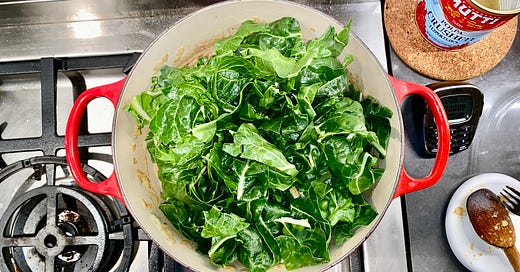



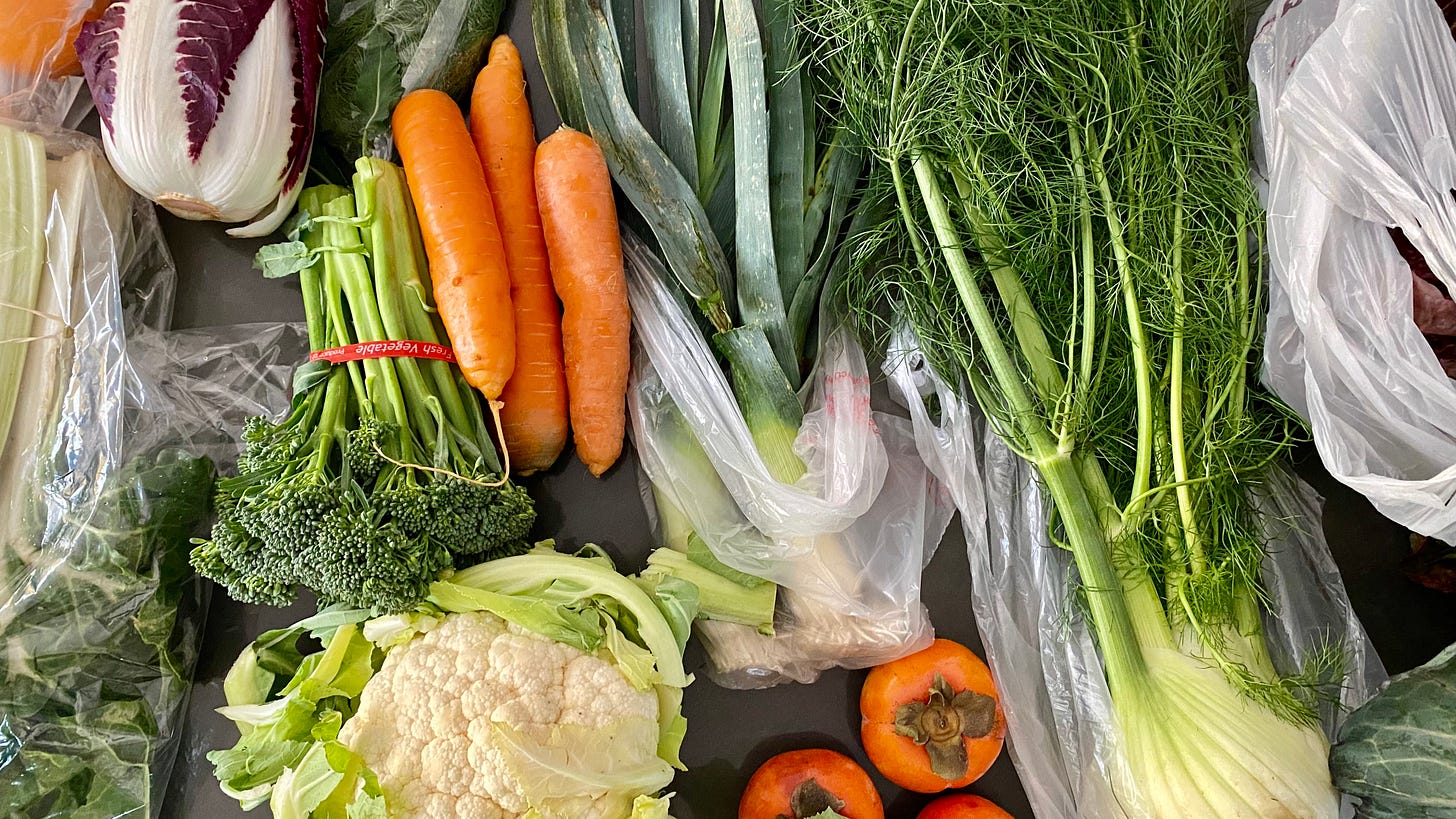
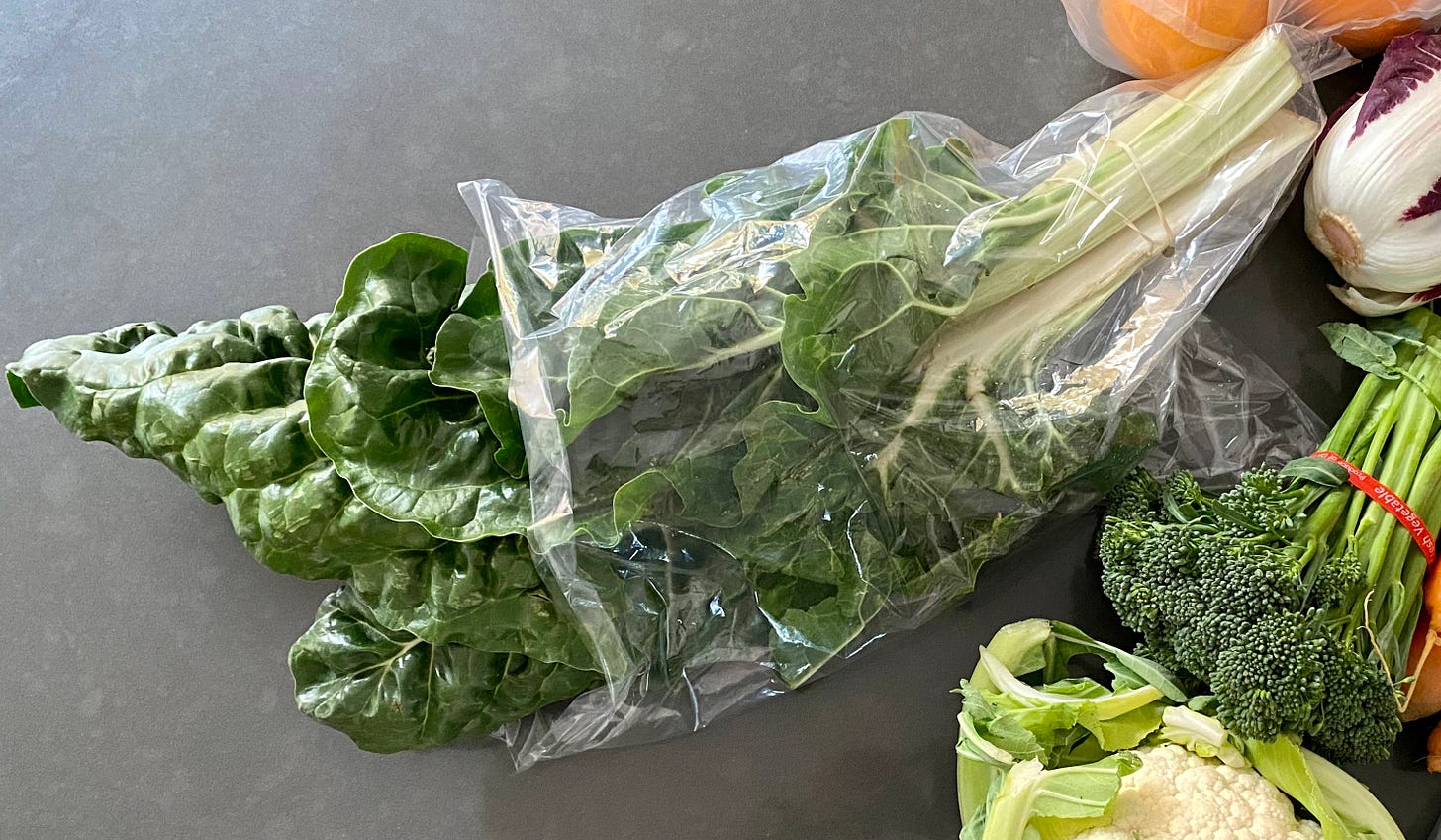
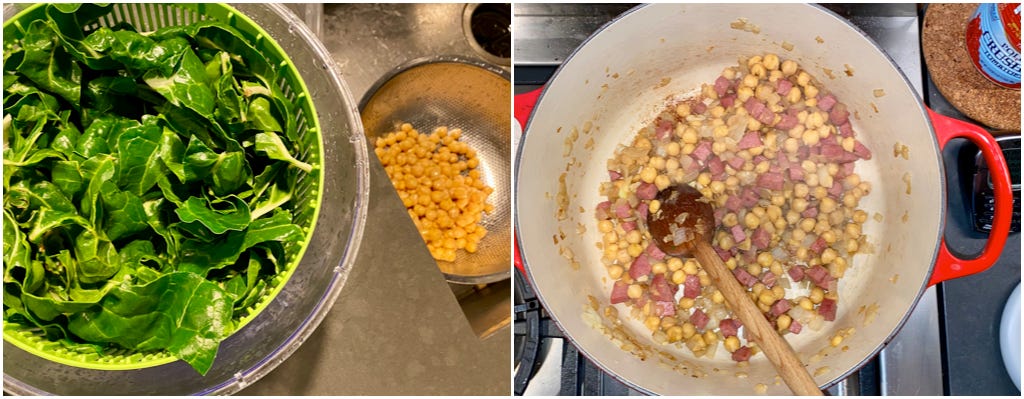
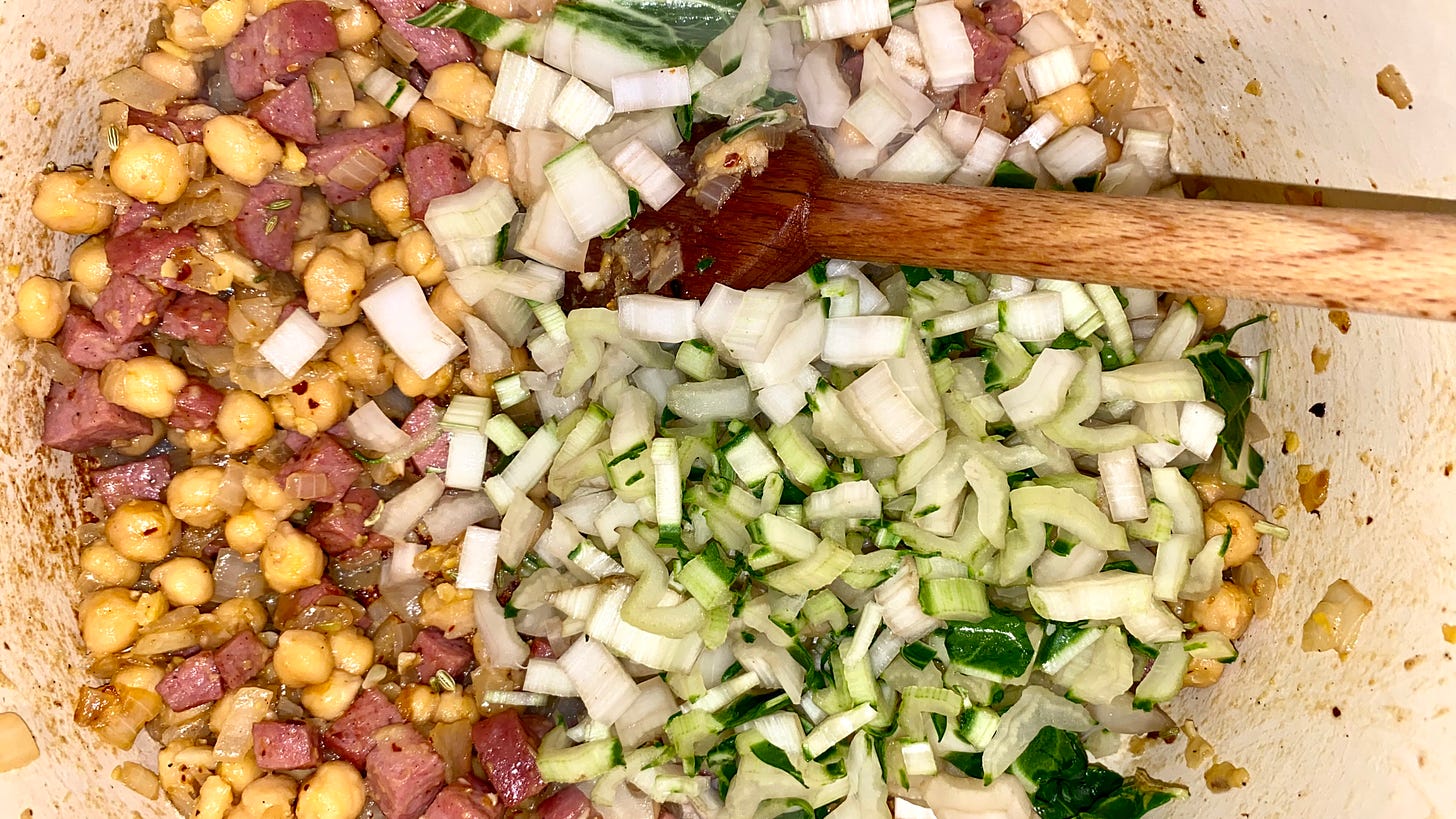
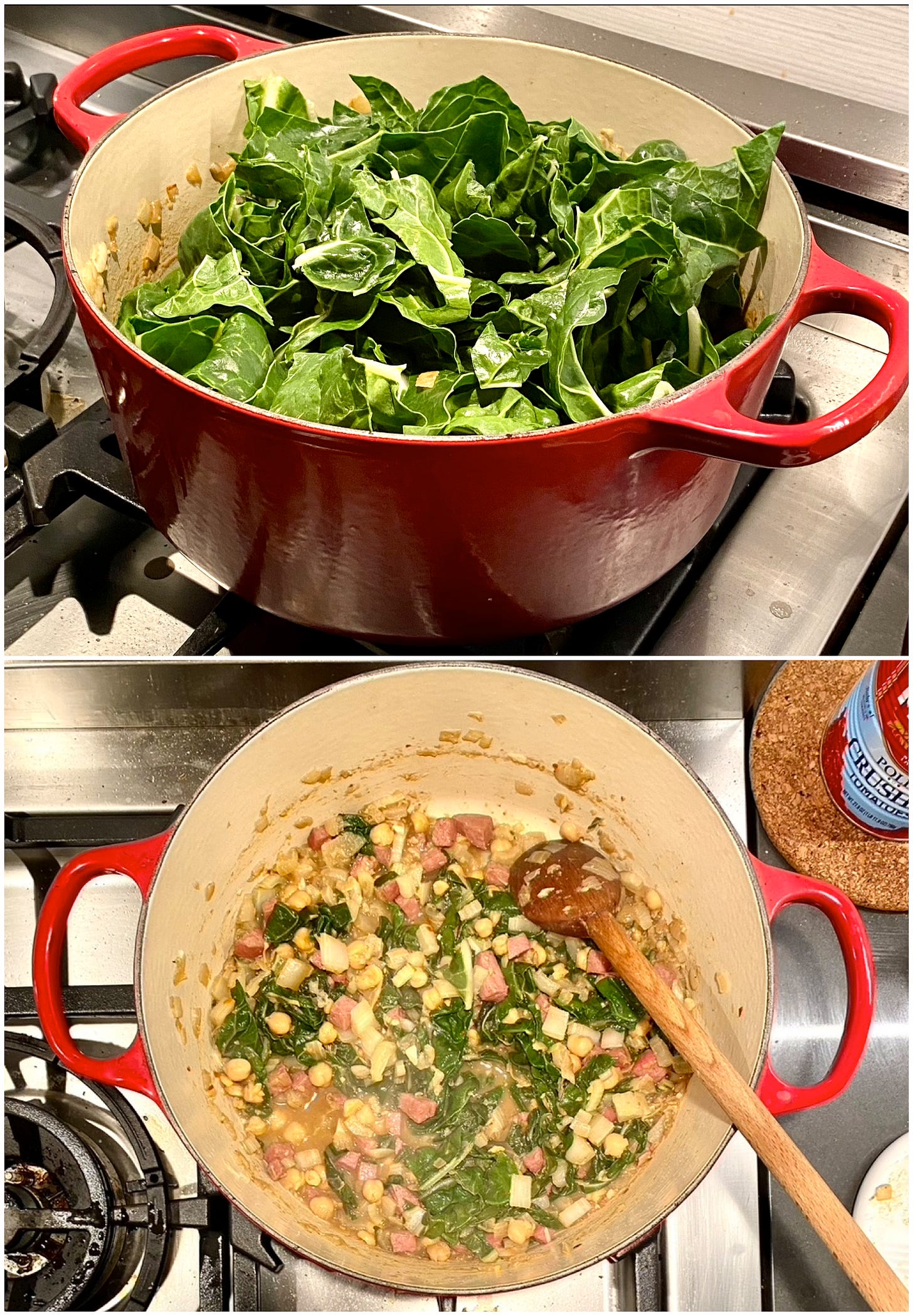
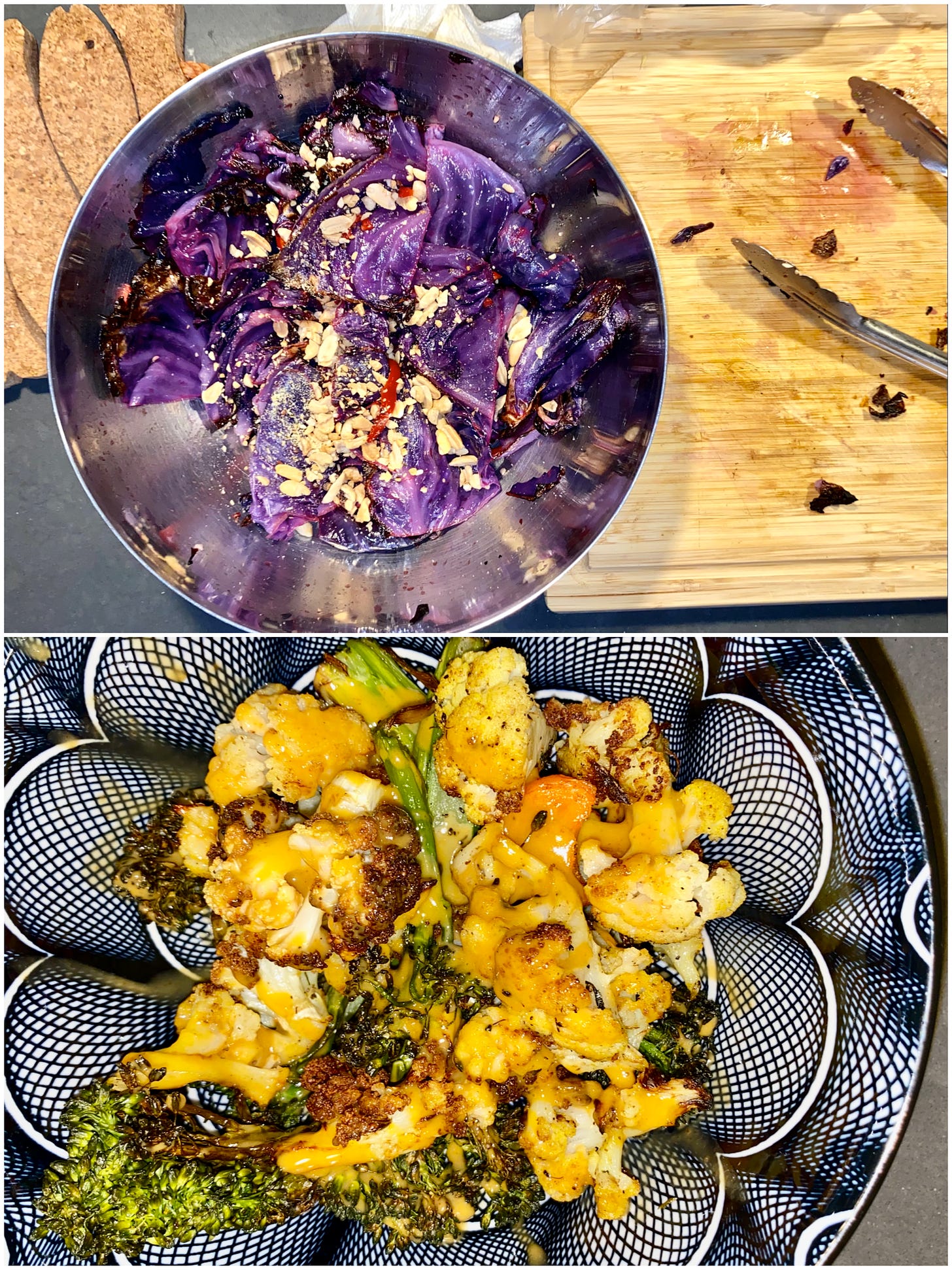
Love your use of "glug" xo
This post made me smile and inspired me to cook some veg!